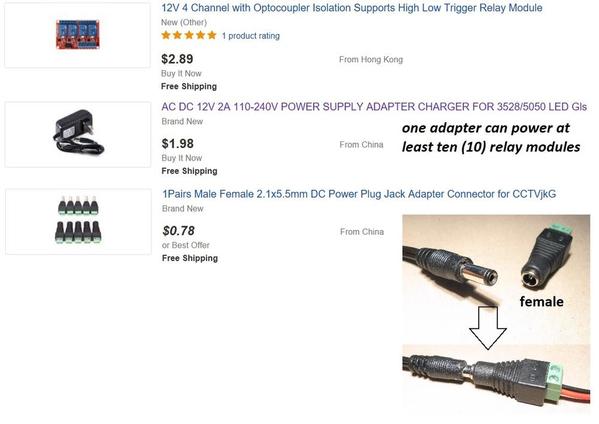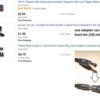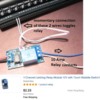hello. this has probably be asked before so if it has, sorry. can the switches on the aiu be set to be on all the time? i suppose i can't do anything to the aiu itself but can one setup something that the switch in the aiu triggers, let say, a relay to made the operation run all the time instead of momentarily. thanks.
Replies sorted oldest to newest
You need to explain what you're talking about. What does it mean for a switch track to be "on all of the time"?
hello barry. thanks for the reply. what i mean to say is, there are 10 switches on a aiu which when i hit the soft key to tell a certain switch to operate, the switch will open or close in just an instant. i would like that switch to operate like an accessory which when i hit the soft key the accessory will run until i hit the stop soft key. i know the switches will only operate for an instant but is there a way to hook something up to make the switches function like an accessory. hope i have made sense. thanks again
would like that switch to operate like an accessory which when i hit the soft key the accessory will run until i hit the stop soft key
You can do that by wiring each switch to a pair of AIU accessory ports. Another way would be to wire the AIU SW port to a double-throw latching relay, and wire the relay to the switch motor.
Regardless, why would you want to do so? The nature of switch tracks is that they throw and stay thrown until you throw them the other way.
hello barry. thanks again. i was wanting the switches on the aiu to act like an accessory because i have all of my accessory ports filled. the idea of using a double-throw latching relay is what i think i am looking for. now, to find out how to wire it.
Are you using Tortise switch machines ?
hello clem. thanks for the reply. no but i am not worried about operating switches. i want the aiu switch port to operate an accessory.
The SW ports on an AIU close for exactly 0.5 seconds...momentarily connecting the "IN" terminal to the "1" or "2" terminal.
MTH actually has a diagram somewhere showing how to hook up an external latching relay for the specific application of Tortoise-like machines. IIRC they suggest a 12V DC relay so you supply a 12V DC power supply like from a $2 wall-wart adapter. The AIU SW port then pulses the "set" or "reset" coils of the latching relay with 12V; "IN"=12VDC, "1" and "2" drive the 2 relay coils.
12V DC latching relays are all over the map in price depending on whether you are comfortable soldering to relay pins...or whether you want a circuit board with the relay already wired up to screw-terminals.
Attachments
A long-winded discussion, but the following post and thread has links to the MTH diagram as well as the various latching relay options from $2 and up.
https://ogrforum.ogaugerr.com/...95#67314622779578595
If you like to fiddle with this stuff, another option is to use insanely (low) priced eBay relay modules to "make" a latching relay out of generic non-latching relays. The point being you can get board-mounted relays for less than $1 each on eBay. If you don't need the 2-pole switching of DPDT relays (as is need for Tortoise-type applications), using a multi-relay board from eBay might be your most economical solution as they come with screw-terminals and can switch 10 Amps (more than an AIU relay) so you may not even need to fire up the soldering iron. More details if interested.
thank you everyone for the info. i think i get the picture, stan, but i am interested in more details when you get time.
The linked thread above shows how to attach a latching relay to an AIU SW port to provide stable/latching/on-off behavior like you get from an ACC port. It shows how to use a "bare" ~$2 latching relay and possibly tedious wiring/soldering, or a board-mounted latching relay with screw-terminals (no soldering) but ~$15. In each case, pressing the "straight" or "diverge" button on the DCS controller would generate a momentary "set" pulse or a momentary "reset" pulse at the SW port. These pulses would toggle the latching relay on and off. A 12V DC wall-wart power adapter is required.
What's slightly different in the current application is an ACC port does not require a double-pole (DPDT) relay since you are only turning a single circuit ON or OFF. To that point, one could simply argue that buying another AIU for $100 (round numbers) provides 10 additional ACC ports for about $10 per ACC port. Yes, I get that...but doesn't answer the original question.
So this being a discussion forum, here's something to discuss.
For about $3 on eBay (free shipping), you can buy a 4-channel 12V relay module. These are non-latching relays, but by wiring it up as shown, you can turn it into a latching relay with 10 Amp contacts (more current handling than the native AIU relays). You need a source of 12V DC power but one $2 adapter can support at least 10 relay modules.
It's not the tiniest solution and does require some attention to detail...but no soldering is required! So if you only need a few more ACC ports and have spare SW ports, this might save the cost of an additional AIU.
I'm not sure if there's much interest in "how" it works, but here it is in a nutshell. Only 3 of the 4 relays are used. Relay 1 and 2 are inter-connected to create a latching relay. A "set" pulse closes Relay 1 which Relay 2 then feeds back to latch Relay 1. A "reset" pulse closes Relay 2 which then releases Relay 1. This is a standard, commonly-used configuration to "make" a latching relay out of 2 non-latching relays. Relays 1 and 2 are carrying 12V DC on their outputs so unless you're controlling 12V, you need Relay 3 to control AC voltages.
Relay 4 is not used...though an astute observer ![]() will note you could use Relays 3 and 4 in tandem to "make" a double-pole latching-relay for Tortoise-like operation for much less coin than what's available today (AFAIK).
will note you could use Relays 3 and 4 in tandem to "make" a double-pole latching-relay for Tortoise-like operation for much less coin than what's available today (AFAIK).
And there are 8-channel and 16-channel relay modules with similar less-than-a-buck per relay pricing. So some wiring and space can be saved using a larger relay module. 3 relays per "new" ACC port.
Finally, a really astute observer ![]()
![]() will note this method truly behaves like an ACC port relay in one possibly significant manner. When power is turned off to the TIU/AIU after an operating session, ACC port relays turn off automatically. So when you power up on your next operating session, all the ACC ports start off in the OFF position. If you hook up a true latching relay to an SW port, it "mechanically" remembers its last position between operating sessions. Of course, this may be what you want, but it's not how a genuine ACC port relay behaves!
will note this method truly behaves like an ACC port relay in one possibly significant manner. When power is turned off to the TIU/AIU after an operating session, ACC port relays turn off automatically. So when you power up on your next operating session, all the ACC ports start off in the OFF position. If you hook up a true latching relay to an SW port, it "mechanically" remembers its last position between operating sessions. Of course, this may be what you want, but it's not how a genuine ACC port relay behaves! ![]()
Attachments
hello stan. very interesting. this answers my question. i now know how to wire a sw port to operate as an accessory and what parts i need to make it work. thank you very much.
I suspect all the wiring to configure the 4-channel relay module is somewhat of a lead balloon. Here's another relay module that might apply to your specific situation (using a spare SW port to provide ACC port functionality).
With 12V DC applied to this so-called "bistable" relay module, each momentary trigger toggles the relay on, off, on, off...or flip, flop, flip, flop...
Slightly different user-interface in that you press the "diverge" SW button and the relay turns on (and stays on), then you press the "diverge" button again to turn the relay off. At the beginning of an operating session the relay module starts up in the off condition. I figure there are many accessories where you can visually see that an Accessory was turned on from an ACC Port and that's all that's required.
Much simpler wiring but subject to the toggling behavior.
As with the multi-channel relay module, this module uses the same non-latching 12V DC relay (10 Amp contacts) surrounded with some electronics to effect the bi-stable behavior.
All this is sort of a mind-set. There are dozens of similar low-cost 12V relay modules with a variety of features that can be useful to O-gauge layouts when used in conjunction with an AIU. Seems redundant to add relays to the internal AIU relays but that's the way it is. For example, there are 12V time-delay relay modules so that an accessory can automatically turn OFF after some running time...or turn ON after a delay following a SW Port momentary trigger. I recall an OGR thread where a timer relay module was used to limit the time that an ACC Port could drive the uncoupling track electromagnet. That is, while one should use the "ACT" button to only momentarily power the uncoupler, a timer relay can automatically cut power in case the latching "ON" button was mistakenly pressed.












